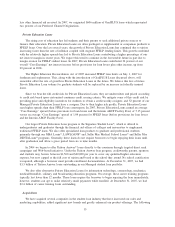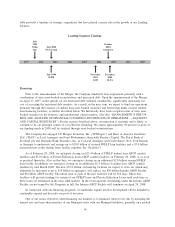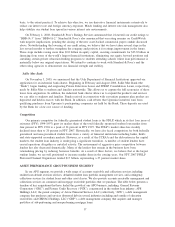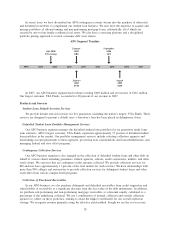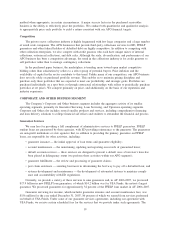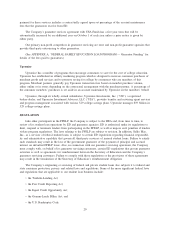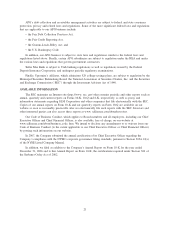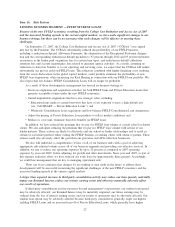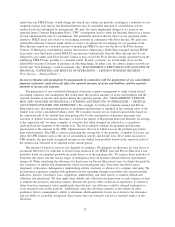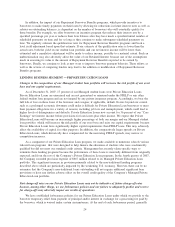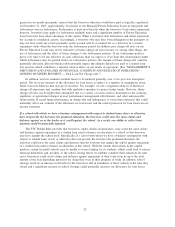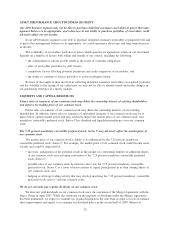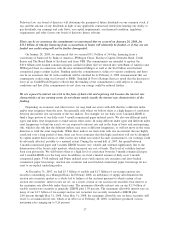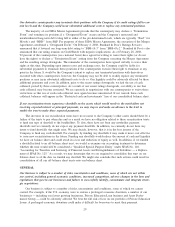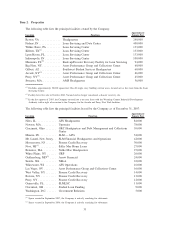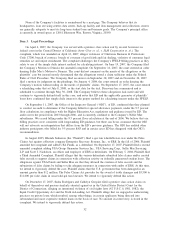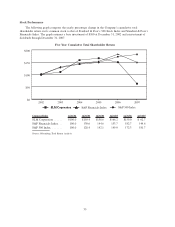Sallie Mae 2007 Annual Report Download - page 26
Download and view the complete annual report
Please find page 26 of the 2007 Sallie Mae annual report below. You can navigate through the pages in the report by either clicking on the pages listed below, or by using the keyword search tool below to find specific information within the annual report.granted in six-month increments, interest that the borrower otherwise would have paid is typically capitalized.
At December 31, 2007, approximately 14 percent of our Managed Private Education Loans in repayment and
forbearance were in forbearance. Forbearance is used most heavily when the borrower’s loan enters repayment;
however, borrowers may apply for forbearance multiple times and a significant number of Private Education
Loan borrowers have taken advantage of this option. When a borrower ends forbearance and enters repayment,
the account is considered current. Accordingly, a borrower who may have been delinquent in his payments or
may not have made any recent payments on his account will be accounted for as a borrower in a current
repayment status when the borrower exits the forbearance period. In addition, past charge-off rates on our
Private Education Loans may not be indicative of future charge-off rates because of, among other things, the
use of forbearance and the effect of future changes to the forbearance policies. If our forbearance policies
prove over time to be less effective on cash collections than we expect or if we limit the circumstances under
which forbearance may be granted under our forbearance policies, the amount of future charge-offs could be
materially adversely affected which could materially impact the ultimate default rate used to calculate loan
loss reserves which could have a material adverse effect on our results of operations. (See “MANAGEMENT’S
DISCUSSION AND ANALYSIS OF FINANCIAL CONDITION AND RESULTS OF OPERATIONS —
LENDING BUSINESS SEGMENT — Total Loan Net Charge-offs.”)
In addition, our loss estimates include losses to be incurred generally over a two-year loss emergence
period. The two-year estimate of the allowance for loan losses is subject to a number of assumptions about
future borrower behavior that may prove incorrect. For example, we use a migration analysis of historical
charge-off experience and combine that with qualitative measures to project future trends. However, future
charge-off rates can be higher than anticipated due to a variety of factors such as downturns in the economy,
regulatory or operational changes in asset performance management effectiveness, and other unforeseeable
future trends. If actual future performance in charge-offs and delinquency is worse than estimated, this could
materially affect our estimate of the allowance for loan losses and the related provision for loan losses on our
income statement.
If a school with which we have a business arrangement with respect to student loans closes or otherwise
does not provide the borrower the promised education, the borrower could raise the same claims and
defenses against us as the lender as it could against the school. As a result, our ability to collect loan
amounts could be materially impaired.
The FTC Holder Rule provides that borrowers, under certain circumstances, may assert the same claims
and defenses against repayment of a student loan used to finance an education at a school as that borrower
may have against the school itself. Specifically, if a school with whom we have a business arrangement with
respect to student loans closes or otherwise does not provide the borrower the promised education, the
borrower could raise the same claims and defenses that the borrower has against the school against repayment
of a student loan used to finance an education at that school. With the current dislocations in the capital
markets, certain for-profit schools may be unable to secure lending for its students, which could lead to serious
financial difficulties and, possibly, to the school closing before its students complete their education. In such
cases, borrowers could assert claims and defenses against repayment of their loans from us up to the total
amount of the loan depending upon how far along they were in their program of study. In addition, school
closings result in an increase in defaults for the borrowers still in attendance at those schools at the time they
closed and a significant increase in school closings could materially increase our allowance for loan losses.
25


